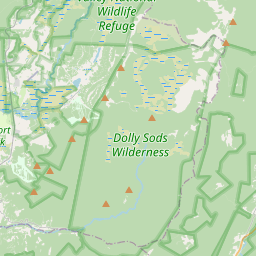Welcome to Fort Mulligan Civil War Site
Historical marker location:






April 12, 1861: The Civil War begins with the Confederate attack on Fort Sumter, located in South Carolina's Charleston Harbor.
April 15, 1861: President Abraham Lincoln issues a call for 75,000 volunteers to serve in the Union Army to suppress the rebellion.
May 24, 1861: The first major land battle, known as the First Battle of Bull Run (or First Battle of Manassas), takes place in Virginia. It ends in Confederate victory.
September 17, 1862: The Battle of Antietam in Maryland becomes the bloodiest single-day battle in American history, with heavy casualties on both sides. The Union forces, commanded by General George McClellan, manage to halt Confederate General Robert E. Lee's advance into Union territory.
January 1, 1863: President Lincoln issues the Emancipation Proclamation, declaring that all slaves in Confederate-held territories are to be set free. However, the proclamation does not immediately free all slaves in the United States.
July 1-3, 1863: The Battle of Gettysburg in Pennsylvania takes place, resulting in a significant Union victory and inflicting heavy casualties on Confederate forces. It marks a turning point in the war.
November 19, 1863: President Lincoln delivers the Gettysburg Address, emphasizing the principles of liberty, equality, and the preservation of the Union.
April 9, 1865: General Robert E. Lee surrenders to Union General Ulysses S. Grant at Appomattox Court House in Virginia, effectively ending the Civil War.
April 14, 1865: President Lincoln is assassinated by John Wilkes Booth while attending a play at Ford's Theatre in Washington, D.C.
May 10, 1865: Confederate President Jefferson Davis is captured, signaling the collapse of the Confederate government.
December 6, 1865: The Thirteenth Amendment to the United States Constitution is ratified, officially abolishing slavery throughout the country.
While this timeline provides an overview of key events, it is important to note that the Civil War spanned over four years, from 1861 to 1865, and encompassed numerous battles, campaigns, and political developments that shaped the course of American history.
More history nearby
Harpers Ferry, West Virginia, is the site of John Brown's raid in 1859, which is considered a major event leading up to the Civil War. Brown and his supporters attempted to seize the federal arsenal at Harpers Ferry in an effort to arm slaves and start a rebellion against slaveholders.
The county was officially established in 1866 and named in honor of General Ulysses S. Grant, who later became the 18th President of the United States. During the Civil War, Grant County witnessed several skirmishes and battles, including the Battle of Petersburg in 1864. The war had a significant impact on the county, with many farms and properties destroyed.
After the war, Grant County experienced a period of economic and industrial growth. Timber, coal, and limestone mining became significant industries in the area, contributing to its development. The completion of the South Branch Valley Railroad in the late 1800s further stimulated economic progress, allowing for easier transportation of goods.
Over the years, Grant County has faced various challenges, including the decline of the coal and timber industries. However, the county has continued to evolve and adapt. Today, it is known for its natural beauty, outdoor recreational opportunities, and historic sites, attracting visitors from around the country. With its rich history and diverse landscapes, Grant County remains a fascinating destination in West Virginia.
Grant County Timeline
This timeline provides a concise overview of the key events in the history of Grant County, West Virginia.
- 1689: European explorers first documented the area now known as Grant County, WV.
- 1752: The first permanent European settlement, Moorefield, was established.
- 1786: Pendleton County was created, including parts of the present-day Grant County.
- 1866: Grant County was officially established, named after General Ulysses S. Grant.
- 1880s: The South Branch Valley Railroad was built, connecting Grant County to other parts of the region.
- 1933: The creation of the South Branch Wildlife Management Area provided recreational opportunities for residents and visitors.
- 1969: The release of the film "Night of the Living Dead," partially filmed in Grant County, brought the area international recognition.
- 1985: The Canaan Valley National Wildlife Refuge was established, preserving the area's unique ecosystem.
- Present: Grant County continues to be a rural and scenic area, attracting visitors with its outdoor recreation, historical sites, and natural beauty.